Organic treatment against pests and fungus in Zone 9a
Khalid Waleed (zone 9b Isb)
8 years ago
Featured Answer
Comments (206)
rosecanadian
8 years agolast modified: 8 years agojessjennings0 zone 10b
8 years agolast modified: 8 years agoRelated Discussions
How To Get Rid Of Fungus Spores
Comments (14)To back up what you added JJJFrisco, I found this: "Researchers in Brazil were cited as saying that milk has the makings of an ideal fungicide for protecting organically grown cucumbers and other vegetables. It attacks a mould known as powdery mildew, which is a major problem for organic farmers scrambling to meet the growing demand for chemical-free vegetables. The mould, Sphaerotheca fuliginea, appears as a powdery white growth on the leaves of cucumbers and courgettes (zucchini). It damages the plants by causing the leaves to shrivel up. At present, only chemical fungicides are available. Milk's fungicidal powers were discovered by Wagner Bettiol of the environmental laboratory of Embrapa, the Brazilian Agricultural Research Corporation, in Jaguariuna, north of Sao Paulo. Bettiol, who was looking for cheap ways to control plant pests, observed that byproducts from milk-processing factories killed powdery mildew on courgettes. So he decided to simply spray fresh milk on the plants to see if it had the same effect. To his surprise, he found that it did. In fact, spraying heavily infected plants twice a week with a mixture of one part cow's milk to nine parts water was at least as good at stopping mildew as the chemical fungicides fenarimol and benomyl, Bettiol discovered. In many cases, milk was both faster and more effective. After two to three weeks of spraying with milk, the area of leaves infected was in some cases only a sixth or less of the area affected on plants treated with chemical fungicide." I wonder is spraying 100% milk would have the same effects....See MoreRoot Knot Nematodes RKN Control (organic)
Comments (6)I was perusing the organic forum at Da>e's, when I stumbled on a reference to neem cake being used as a fix for RKN. Since I've always had a good deal of respect for the insecticidal effectiveness of the cold-pressed oil of the neem tree, the first thing I thought was this is something I should look into to see if it would work for those of you who have difficulty with the antagonists. One of the first things I noticed in my search was this post. I don't know how I missed it when it was originally posted back in 09. I would have thought that someone would pick up on this and run with it, as it sounds very promising. How about you, James? I know they give you fits. Anyway - the thread deserves to be bumped. Whether or not it prompts anyone to take another look at it is something entirely different, but I know that if I was in RKN territory and having problems I'd sure be checking it out. Al...See MoreOrganic solutions to pests and diseases in plants
Comments (15)My getting horse manure mid-summer this year was worth it: Only 1 rose-slug out of the entire garden (50+ roses), that's on the hill where I could not apply horse manure. Previous year of NO horse manure I had at least a dozen rose slugs. High-phosphorus ATTRACT pests. Yves Seedling got DOUBLE-DOSE of Dr.Earth NPK 4-10-7 ... I was absent-minded so I applied that twice. That's the only rose which was attacked by thrips ... I killed 5 thrips on that rose, after seeing one deformed bloom. Yesterday I saw one grasshopper on that rose, so I chopped that pest into half with a scissor. I was cutting blooms for the vase, so I inspected all my roses: none of them have grasshopper, except for Yves-seedling. Yves Seedling is in its 3rd year, no thrips whatsoever in previous years .. it's a dark-red rose. Re-post the info. Here's an Abstract from Cornell University, entitled "Effects of manure and chemical fertilizers on insect pest populations on collards." http://www.researchgate.net/publication/223371840_Effects_of_manure_and_chemical_fertilizers_on_insect_pest_populations_on_collards Department of Entomology, Comstock Hall, Cornell University, Ithaca, NY " This proposition was examined using collards grown in five treatments: two with fresh manure at two levels (12 and 220 ha−1); one with ‘sheet composted’ manure at 220 ha−1; a chemical fertilizer treatment (785 kg ha−1 of 13:13:13 NPK); and a control treatment with no added nutrients. Population densities of two flea beetles and two lepidopteran pests were monitored weekly. During population peaks, flea beetle densities were significantly higher on plants receiving chemical fertilizers than on plants receiving similar amounts of macronutrients from manure. Flea beetle, imported cabbage worm and diamondback moth densities were significantly higher on untreated plants than on plants receiving any added nutrients. Flea beetle densities were also significantly higher on plants grown with ‘sheet composted’ manure than on those grown with fresh manure. " *** From StrawChicago: As to rose-midge, the only time I had that was when I did my oat-meal experiment in 2013 fall: mixing oatmeal with fluffy potting soil, and topped Golden Celebration with that in the fall. That created a perfect moist & fluffy environment for rose midge to hatch. I saw midge flying around that rose, plus deformed blooms, so I read Cornell University research which stated that too dry, or too wet would stop midge. So I put my soaking-wet-clay on top, and FLOODED that area many times per day. That took care of rose-midge for good. No other roses affected, and no midge in my 2 decades of growing roses. This year I topped my roses with DRY & alkaline RED-LAVA-ROCK and pea-gravel. Here's a good article on Rose-midge control: http://www.pghrosesociety.org/rosemidge.html "The only reported effective non-chemical control for rose midge would be daily removal of affected new growth tips and destroying the debris. This prevents of larva from dropping to the ground and pupating into new insects. Do not compost the remove plant material for this will allow the life cycle to continue in and around your garden. This requires diligent daily inspection of the new growth to detect the infestation and remove the plant part before the larva (sometimes referred to as maggots) fall to the ground. There is some anecdotal reports that removal of any mulch and loose soil around the plants in late fall will remove the embedded larva which burrows about 1-2" below the surface. Again this material must be removed from the garden or anywhere within 150 feet to prevent return of the insect. The only scientific study published in the horticultural literature on in subject of rose midge control appeared in 2006 authored by Dr. Janice Elmhirst ... The two biologicals tested are commercially available, one being AVID (with the active ingredient abamectin derived from the soil microorganism Streptomyces avermitilis and the other DOKTOR DOOM®, a ready to use permethrin formulation. The predators were a nematode (Steinernema feltiae) and a predatory mite in the form of an unidentified Hypoaspis species. The chemical control was Matador (lambdacyhalothrin), which is similar to the active ingredient in the Bayer chemical products mentioned earlier. The results of this study were interesting in that the predatory insect approach actually had a higher level of midge damage than the untreated controls. The best result came from the Doktor Doom product with less than 2% damaged rose growth. The next best was the chemical control with approximately 4% damaged tips. The Avid did better than the control but not by a significant amount." http://www.pghrosesociety.org/rosemidge.html...See MoreWeeds, Fungus, and Bare Spots Oh My!
Comments (9)Wow... that was a lot of information! Dmt gave good information and probably knows a lot more than me. I live in JAX area also, and had my yard trenched for AT&T. Those areas usually die b/c you would have to water it like new sod. Half of mine survived, half didn't. When I moved in last fall all my neighbors had decent looking front yards. Now almost all of them near me have what looks like extensive damage from something. My back yard has issues, not sure what, but so far my front yard, seemingly in danger from whatever is ailing my area of the street, is holding on strong. Sites like this rescued my front yard (HOC, watering, bug damage, etc...). Can't see your sprinkler head you mention. If the sprinkler head is above the ground level you could reposition it to be level with the ground (may need a taller pop up if you do that). You may have tried, but you can usually adjust the spray radius of the sprinkler heads so maybe you could even out that wet spot by adjusting the nozzles. Organic is noble, but I can't help you there. I do use milorganite (greenedge is the local almost equivalent in our area), although my wife complained yesterday about the smell of both. Oh, weed #2 looks like surge to me. Celsius will kill it I think... Bottom right of the bare spot #3 picture looks like maybe some kind of sedge or kyllinga seed heads. It looks suppressed, possibly from the previous weed treatment company. A couple weeks after you think it was treated last you could try treating it again. I think Celsius kills kyllinga but not nutsedge, and sedgehammer kills nutsedge but only 'supresses' kyllinga. So there's a conundrum-proper weed ID would obviously help. You could try each but make sure to space out apps by at least a couple weeks to make sure your grass isn't stressed from the app, probably don't want to apply the herbicide if your grass is stressed. You could probably get away with using sedgehammer on anything nutsedge like, hand pull the rest (as a general rule you don't pull up nutsedge) as they come up, and apply a quality pre-emergent in the fall. I say that b/c honestly your yard looks pretty decent. It's not that bad, at least not in the photos. Of course it doesn't' compare to the lawns of the experts on these forums, but us normal people have to keep our expectations in check. You may of course evolve into an expert... Have you checked for chinch bugs? Hopefully the experts chime in if I misspoke......See MoreKhalid Waleed (zone 9b Isb)
8 years agoUser
8 years agolast modified: 8 years agoKhalid Waleed (zone 9b Isb)
8 years agojessjennings0 zone 10b
8 years agolast modified: 8 years agoKhalid Waleed (zone 9b Isb) thanked jessjennings0 zone 10bKhalid Waleed (zone 9b Isb)
8 years agojessjennings0 zone 10b
8 years agorosecanadian
8 years agojessjennings0 zone 10b
8 years agorosecanadian
8 years agostrawchicago z5
8 years agolast modified: 8 years agorosecanadian
8 years agoKhalid Waleed (zone 9b Isb)
8 years agolast modified: 8 years agoKhalid Waleed (zone 9b Isb)
8 years agoKhalid Waleed (zone 9b Isb)
8 years agoKhalid Waleed (zone 9b Isb)
8 years agoKhalid Waleed (zone 9b Isb)
8 years agolast modified: 8 years agoKhalid Waleed (zone 9b Isb)
8 years agoKhalid Waleed (zone 9b Isb)
8 years agolast modified: 8 years agorosecanadian
8 years agoKhalid Waleed (zone 9b Isb)
8 years agojessjennings0 zone 10b
8 years agolast modified: 8 years agoKhalid Waleed (zone 9b Isb) thanked jessjennings0 zone 10bjessjennings0 zone 10b
8 years agolast modified: 8 years agoKhalid Waleed (zone 9b Isb) thanked jessjennings0 zone 10bKhalid Waleed (zone 9b Isb)
8 years agoKhalid Waleed (zone 9b Isb)
8 years agolast modified: 8 years agostrawchicago z5
8 years agolast modified: 8 years agoKhalid Waleed (zone 9b Isb) thanked strawchicago z5Khalid Waleed (zone 9b Isb)
8 years agoKhalid Waleed (zone 9b Isb)
8 years agostrawchicago z5
8 years agolast modified: 8 years agoKhalid Waleed (zone 9b Isb) thanked strawchicago z5Khalid Waleed (zone 9b Isb)
8 years agojessjennings0 zone 10b
8 years agolast modified: 8 years agoKhalid Waleed (zone 9b Isb) thanked jessjennings0 zone 10bKhalid Waleed (zone 9b Isb)
8 years agostrawchicago z5
8 years agolast modified: 8 years agoKhalid Waleed (zone 9b Isb) thanked strawchicago z5Khalid Waleed (zone 9b Isb)
8 years agojessjennings0 zone 10b
8 years agolast modified: 8 years agorosecanadian
8 years agoKhalid Waleed (zone 9b Isb)
8 years agolast modified: 8 years agostrawchicago z5
8 years agolast modified: 8 years agoKhalid Waleed (zone 9b Isb) thanked strawchicago z5jessjennings0 zone 10b
8 years agoKhalid Waleed (zone 9b Isb)
8 years agoJewelsG Z9a
6 years ago
Related Stories

GARDENING GUIDESHow to Switch to an Organic Landscape Plan
Ditch the chemicals for a naturally beautiful lawn and garden, using living fertilizers and other nontoxic treatments
Full Story
DECORATING GUIDESHow to Work With a Professional Organizer
An organizing pro can help you get your house together. Here's how to choose the right one and gain your own clutter-clearing skills
Full Story
DECORATING GUIDESGet Organized: A Place for Your Pets' Stuff
Live in style with your cat or dog thanks to special places for their food, bed and toys
Full Story
ORGANIZING7-Day Plan: Get a Spotless, Beautifully Organized Kitchen
Our weeklong plan will help you get your kitchen spick-and-span from top to bottom
Full Story
WINDOW TREATMENTSEasy Green: 9 Low-Cost Ways to Insulate Windows and Doors
Block drafts to boost both warmth and energy savings with these inexpensive but effective insulating strategies
Full Story
HOUSEPLANTSHow to Add a Living Wall
Learn how to choose systems and plants, and what it will cost to bring a bit of the outdoors in or green up a garden wall
Full Story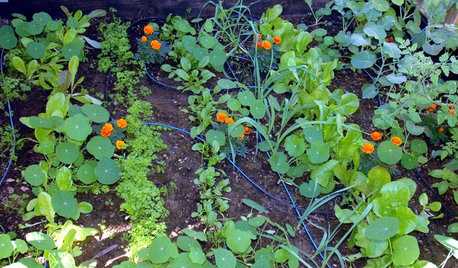
EDIBLE GARDENSGarden BFFs? Why Your Vegetables Are Begging for Companion Plants
Foster friendships among plants for protection from pests, pollination support and color camaraderie
Full Story
FEEL-GOOD HOMEIs Your Bedroom Designed for a Good Night’s Sleep?
Find out how the right nightstands, bedding, rugs, TV and storage can help you get more restful slumber
Full Story
LIFESimple Pleasures: Put On Your Slippers
Preserve the peace and protect your floors and carpets by turning your home into a no-shoes zone
Full Story
GARDENING GUIDESTree Care: Common Tree Diseases and What to Do About Them
Learn to recognize trees that may be affected by diseases or pests so you can quickly take action
Full Story









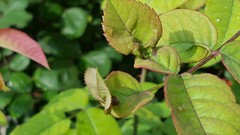


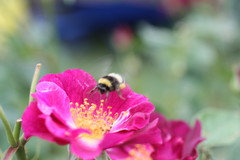
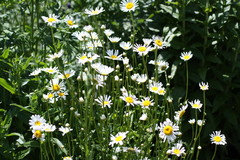
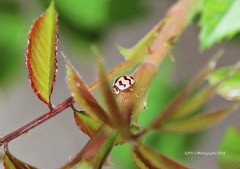






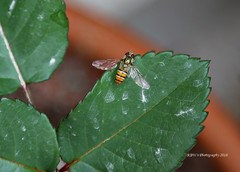

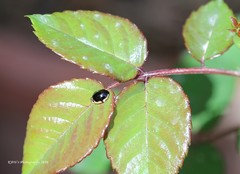
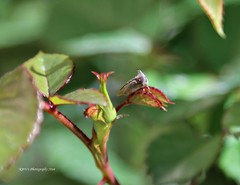



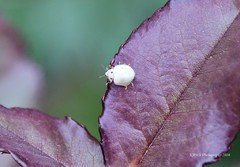

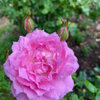
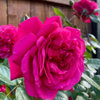

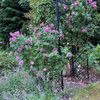
strawchicago z5